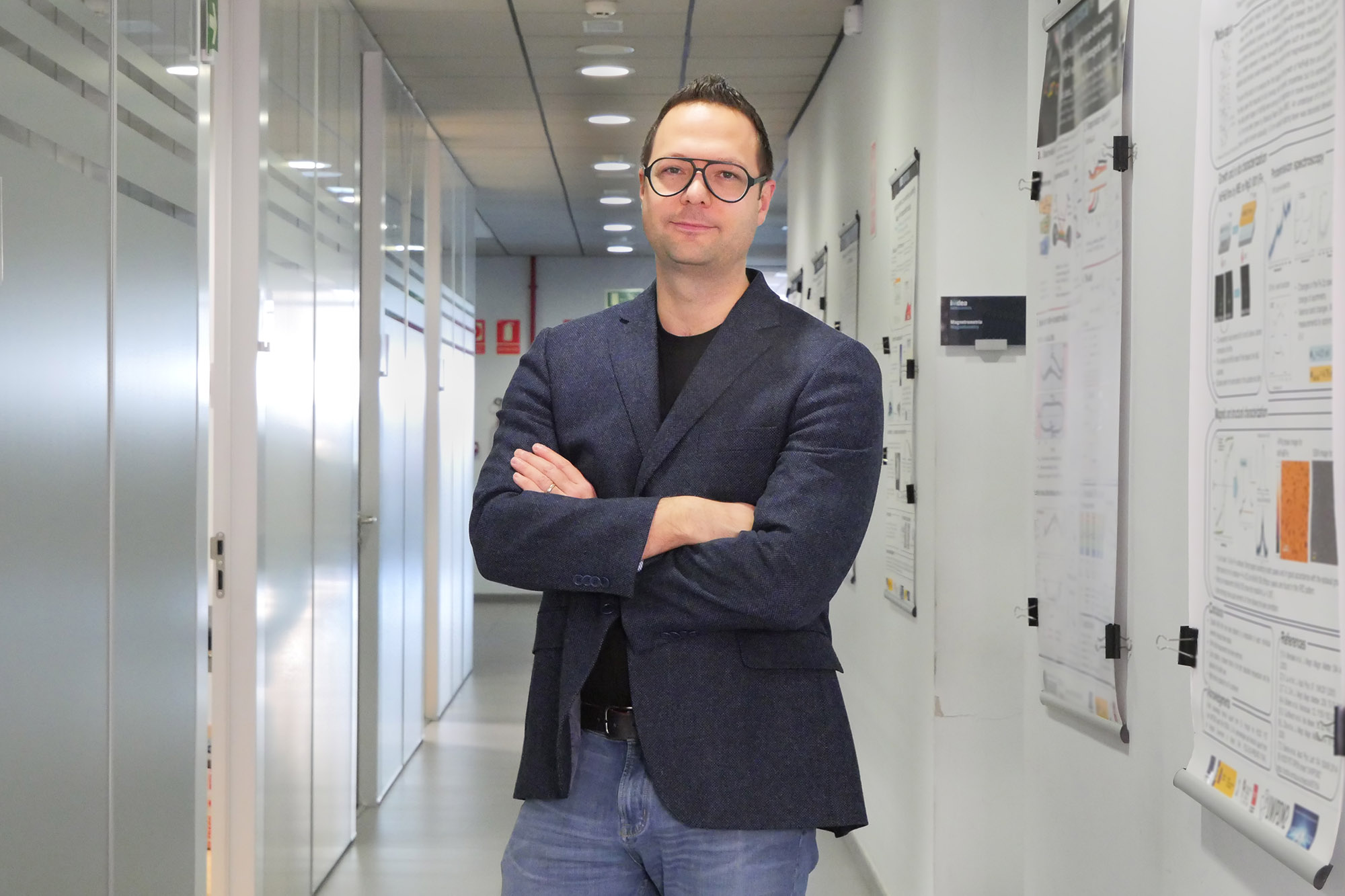A welcome for the ‘Systems Chemistry’ Laboratory led by Thomas Hermans
18.01.2024
 |
|
Prof. Thomas Hermans. Image: IMDEA Nanociencia. |
- The Systems Chemistry Laboratory of Prof. Thomas Hermans moves to IMDEA Nanociencia in Madrid.
- Prof. Hermans has been recently awarded with an ERC Consolidator Grant to run his project SUPRABOT on supramolecular robots.
| Tweet |
Madrid, 18 de enero, 2024. IMDEA Nanociencia is pleased to announce the recent arrival of Professor Thomas Hermans and his research group. At IMDEA Nanociencia, Prof. Hermans will be steering the ‘Systems Chemistry’ Group towards the study of the complex supramolecular systems showing emerging properties, as well as microfluidic systems for flow chemistry and medical applications.
Primarily, Prof. Hermans' Group will focus on investigating networks of interacting molecules, to create new functions and emerging properties. This field of Systems Chemistry, evolving over the past decade, studies how to assemble molecules into larger molecules, leveraging networks of reactions for self-assembly and obtaining new properties. An example would be supramolecular gels that can maintain certain properties for a defined time (1 minute, 1 hour, 1 day…) by manipulating the feedback loops in the reaction network.
Prof. Hermans pivotal research direction revolves around the goal of crafting supramolecular robots, a feat hinging upon precise control of supramolecular polymerization. His project SUPRABOT “Swarming supramolecular robots” has been recently awarded with an ERC Consolidator Grant of 2.8 million € over 5 years to develop micrometer-scale supramolecular robots showing complex interactions and self-organization similar to that of living systems. The project is drawing inspiration from Systems Biology, mirroring biological processes within cells where the assembly of actin or microtubules is powered by chemical fuels adenosine triphosphate ATP or guanosine triphosphate GTP, respectively. In the realm of SUPRABOT, the utilisation of analogous artificial chemical fuels aims to control the behaviour of artificial materials, ultimately aspiring to engineer supramolecular robots capable of dynamic movement. This project promises to make significant contributions to the field of Systems Chemistry, specifically focusing on out-of-equilibrium self-assembly driven by chemical reaction networks.
In tandem with these pioneering efforts, the ‘Systems Chemistry’ Group is committed to devise waste-free chemical processes within the project WaSP—an initiative awarded with a grant ATRAE from the Ministry of Science and Innovation (thought the Spanish ‘Agencia Estatal de Investigación’). The human body has a very efficient mechanism to filter the waste of the chemical reactions: the kidneys. In artificial systems, however, it is little know about how filter out undesired products. The interest of waste-free chemical reactions is on avoiding the excess of waste products that typically accumulates and clogs artificial microfluidic components.
The latter project is very connected to the other main interest of the group: microfluidic components as a tool to study and to control supramolecular structures. Microfluidic channels are a useful tool to transport, mix or process small amount of fluids to achieve lab-on-a-chip technologies. By miniaturizing the fluidic channel, the surface-to-volume ratio increases and the system suffers from friction and clogging. Prof. Hermans is approaching the design of these systems in an innovative manner: replacing the solid walls by stable liquid-liquid interfaces. Their wall-less technology relies on the confinement of fluids inside ferrofluids controlled by magnetic fields in real time. Those wall-less microfluidics channels are uncloggable and can handle solids which are normally problems in micro-sized tubes. In 2018 Thomas co-founded a company Qfluidics to further develop flow chemistry; now, he is the chief scientific officer at the spin-off, employing already 10 people. They expect future applications of the technology in the clinic; they have already tested an ex vivo model system that could be scalable for clinical applications like extracorporeal membrane oxygenation.
We are looking forward to see more of the Systems Chemistry Laboratory at IMDEA Nanociencia.
Welcome!
More information:
Contact:
Prof. Thomas Hermans
thomas. hermans [at) imdea.org
www.hermanslab.com
@hermanslab
Oficina de Divulgación y Comunicación de IMDEA Nanociencia
divulgacion.nanociencia [at]imdea.org
Twitter: @imdea_nano
Facebook: @imdeananociencia
Instagram: @imdeananociencia
Source: IMDEA Nanociencia.




